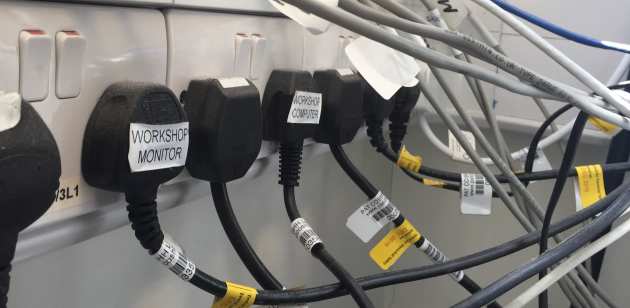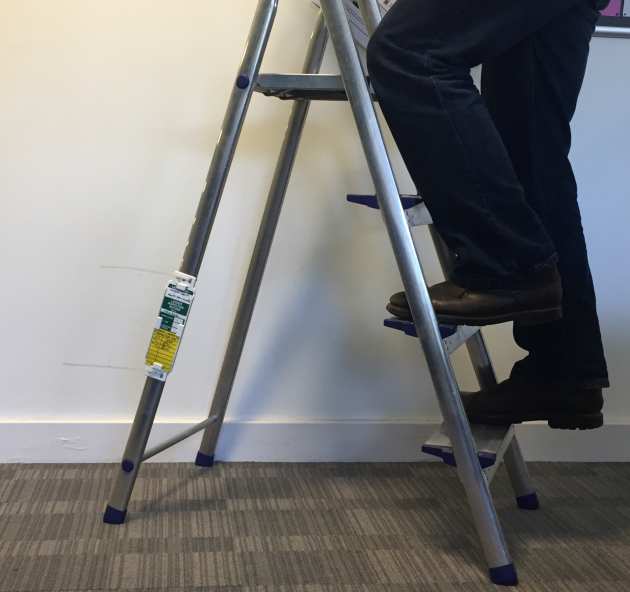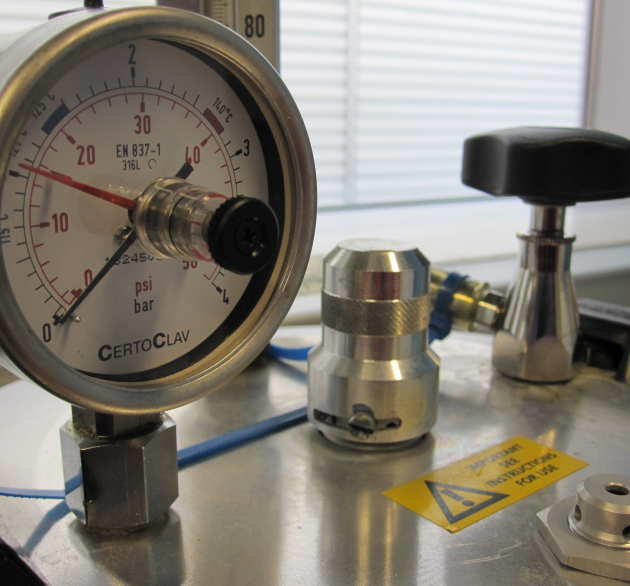Work equipment
Electrical safety

Guidance Note 011 Mobile Communications Equipment - January 2001 (WORD)
Guidance Note 019 Electrical Testing - PAT - March 2010 (PDF)
Ladder safety
The Work at Height Regulations 2005 came into force on 6 April 2005. The Regulations apply to all work at height where there is a risk of a fall liable to cause personal injury.
To comply with these Regulations, Departments must keep a record detailing their tracking and inspecting of ladders and step ladders (excluding kick-stools). A standard system involves issuing a tag (Scafftag for example) for each ladder, on which the date of next inspection is recorded. Each tag has its own identification number and is attached to the ladder in a position whereby it does not hinder its use.
The record requires basic information to be recorded such as: specific location of the ladder, owner, age, place and type of use. This information should be stored locally (an example excel spreadsheet is included below) with the person trained to inspect the ladders. The checklist used is based on an industry standard. Depending on the frequency of use, inspection will be carried out regularly, but 6 monthly intervals are required for the more frequently used ladders, especially those belonging to the Estates Group. In all cases, an inspection should be carried out when something happens that may affect the safety or stability of the equipment, e.g. adverse weather, accidental damage.
Ladder Inspection
Example of Ladder Inspection Checklist
(Word document)
Guidance on Safe Use of Ladders
Guidance Note 036: Use of Ladders and Stepladders
Safe use of ladders and stepladders
Link to HSE web page with extensive guidance
Pressure systems
 Guidance
Guidance
Pressure Systems Guidance Note Word Version
Intermixing of Twin Ferrule Tube Fittings - is it safe?
No. It means the fittings are unlikely to function as designed and puts you at risk of exposure to gases and/or elevated pressures. It will also void any manufacturer’s warranty on the components in use.
Registration Forms
See: Pressure Systems Registration Form
Testing & inspection
The College requires certain control measures to undergo routine testing to help ensure they continue to function as intended. Without such tests controls may not protect the users as intended.
The control measures include respiratory protective equipment where the requirement is that all users must be face-fit tested; local exhaust ventilation such as fume cupboards, safety cabinets and capture hoods, where the requirement is that the College or the Safety Department technician make specific checks; pressure equipment (such as pressurised liquid nitrogen vessels), and lifting equipment such as ropes, pulleys, cranes are registered with Estates and inspected by the College Insurance Inspector; Portable Appliance Testing (PAT), where electrical equipment with a three pin plug is inspected and tested for electrical safety, via specialist contractors, or specifically trained Estates or departmental personnel.
For a comprehensive table of requirements listed under subject heading, follow the College Testing and Inspection Requirements link.
Lithium Batteries
The Safety Department has noticed some incidents involving lithium batteries, and having consulted with our Fire Office colleagues, have produced some Lithum battery guidance around the safe use of these.


